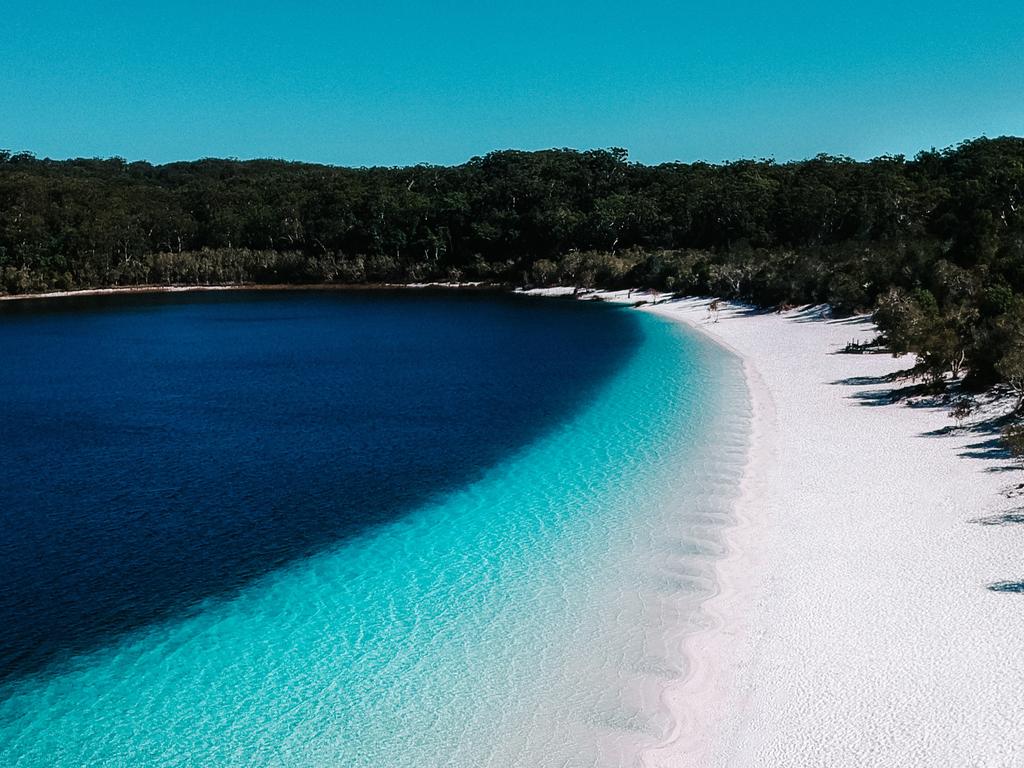Visit the sites where Australia’s bushrangers roamed
Revisit bushranger haunts at these historic sites across the land.
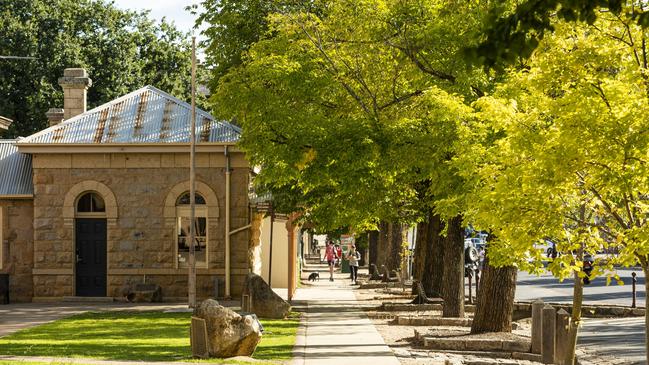
Australia’s colonial map is bullet-riddled with sites where bushrangers held up the stage or shot it out with the Crown’s troopers. The bandits packed Colts and Winchesters, bailed up the bullion coach and escaped on stolen thoroughbreds. With rock star names such as the Poncho Mob, Captain Thunderbolt and Gentleman Matt Cash, a handful of them made it into folklore. For others the game ended instead with a long drop on a short rope. For some it was both.
Discovery of gold in Australia in 1851 turned bushranging into a tempting career path for some young blades of the live fast-die young school. Goldfields highwaymen weren’t your old world “stand and deliver” types but often hard-case ex-convicts or impoverished settlers. For travellers keen to retrace their steps, here’s where to go.

Victoria
No bushranger was more infamous than Ned Kelly, the poster boy for downtrodden Irish settlers in Victoria pushing back against their colonial masters.
In the old gold rush town of Beechworth, you can visit a bare wooden cell behind the town hall where young Ned first languished in 1871. The magistrate handed him three years’ hard labour for horse theft.
In 1878, his mother Ellen received a similar sentence for a signature Irish-Australian female misdemeanour, whacking a bullying cop with a shovel.
The hills around Benalla, Jerilderie, Euroa and beyond have long been known as “Kelly Country”. Among the numerous sites is a plaque at Stringybark Creek, 35km from Mansfield, which commemorates three policemen shot there in 1878 by the Kelly Gang. The plaque, installed in 2001 by the Victoria Police Force, speaks of the long memory of the law.
A 6m statue of “Big Ned” looms today over Glenrowan, the town captured by the gang in June 1880. The rest is history. Kelly, garbed in his famous full-metal hoodie, was shot, captured and later tried. When Sir Redmond Barry sentenced him to death by hanging, Kelly, never one to miss his cue, coolly replied: “Yes, I will meet you there.” Aged 25, he was executed on November 11, 1880. Barry followed 12 days later, dying of lung disease.
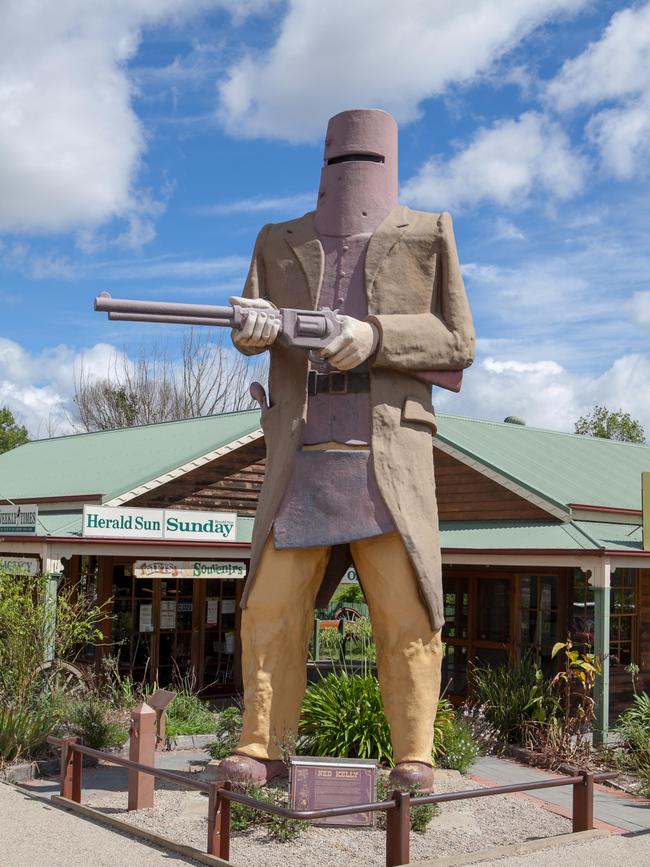
New South Wales
Samuel “Cranky Sam” Poo, hanged at Bathurst in 1865, was one of Australia’s few Chinese bushrangers. While his moniker was presumably not self-awarded, many outlaws gave themselves flash aliases such as Wild Toby, Yankee Jack, Black Caesar and Jack the Rammer.
For a mob of cop-hating desperados, there was an ironic penchant for the nom de guerre “captain”. Thus, the nocturnally themed “Captains” Moonlight, Starlight and Midnight.
Captain Thunderbolt (Frederick Wordsworth Ward at home) plundered in the New England highways but was eventually imprisoned on Sydney’s Cockatoo Island. The jail’s reputation was, according to one commentator, “enough to send a thrill of horror through every honest member of society”.
Ward was meant to spend seven years there for horse-stealing but in 1863 granted himself early parole by swimming across the reputedly shark-infested harbour to Woolwich, where his wife and fellow gang member, Mary Anne Bugg, waited with a getaway steed. One glance at the prison’s solitary confinement cells – more like stand-up coffins – explains why he took his chances as a shark snack.
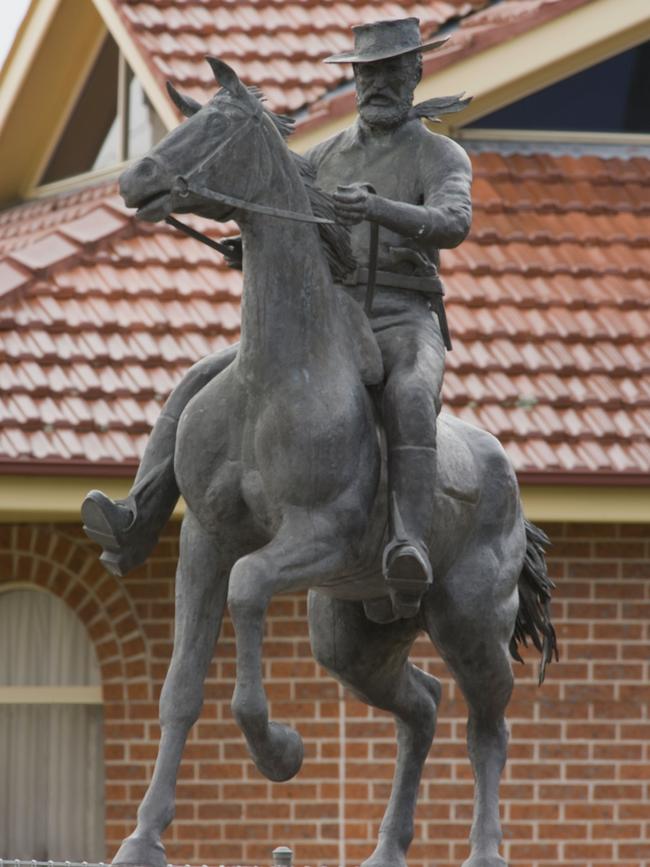
Ward’s escape, even if a furphy, makes a ripping yarn but there was no happy ending. In 1870, Thunderbolt Fred ate lead in a shootout with troopers at Uralla where an imposing statue of him now stands at the junction of the New England Highway and Thunderbolts Way.
John “Bold Jack” Donahue, immortalised in song as “the Wild Colonial Boy” was part of a daring gang that robbed widely from Yass and the Hunter down to Illawarra. By age 24 he too was dead, shot in 1830 by police at Bringelly near Campbelltown.
Horse thief and murderer Daniel “Mad Dan” Morgan lived a full decade longer, reaching the advanced age of 35. He did most of his stick-ups around the southern NSW high country before being slain in 1865 by a bounty hunter.
The state’s most flamboyant outlaws were Ben Hall, Frank Gardiner and John Gilbert. Riding stolen racehorses, they pulled off audacious raids around Bathurst and the central tablelands, their most famous hit being the 1863 raid on Canowindra. The gang corralled townsfolk into a pub for three days of partying before getting out of Dodge with the law on their tail. When the police caught up with Hall at Goobang Creek near Forbes in 1865 it was a case of overkill. At least 30 bullets were found in his body.
Canowindra raconteur Craig Lawler brilliantly retells the Gardiner-Hall Gang yarn during his Blind Freddy’s Bushranger Tour.
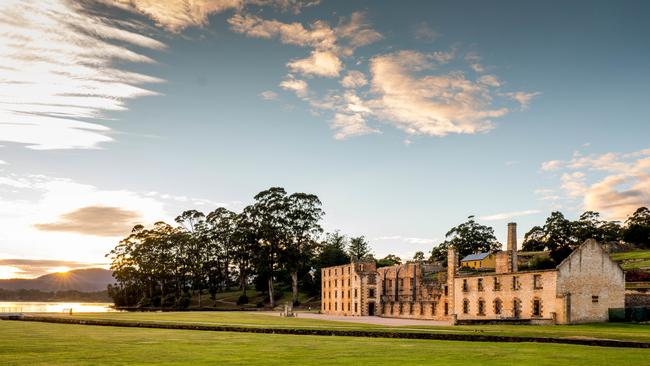
TASMANIA
The most notorious Vandemonian bushranger, Martin “Gentleman Matt” Cash (said to be an ancestor of Australia’s 1987 Wimbledon champion Pat Cash), was transported from Ireland in 1827 for an unusual crime of passion – shooting a love rival in the buttocks. He served seven years in the grim Port Arthur slammer but once released he reoffended. Captured and sentenced to another seven years, Cash instead braved the waters of Eaglehawk Neck to become the first prisoner to escape Port Arthur.
He teamed up with two others and turned to bushranging with a twist – no unnecessary violence – which earned them names such as “Cash and Co” and “Gentlemen Bushrangers”. Their cash and carry enterprise didn’t last and, on being arrested in 1843, they were condemned to the hellhole of Norfolk Island. Having survived 10 years there, a tamed Cash returned to Tasmania where he died in 1877, aged 69, one of the rare bushrangers to make it to old age.
Queensland and South Australia
Lacking major gold strikes, neither Queensland nor South Australia held great temptation for the gunslingers, psychotics and lurk merchants who operated in the southeastern states.
With the exception of James “the Wild Scotchman” McPherson, Queensland’s outlaws were mainly horse and cattle thieves, not bushrangers. The most famous of the rustlers, Harry Readford was fictionalised as “Captain Starlight” in Rolf Boldrewood’s 1883 novel, Robbery Under Arms, but the actual Captain Starlight was NSW bushranger and killer, Frank Pearson.
Adelaide of the mid-1880s saw a local wannabe, John Kerney, hijack the name Captain Thunderbolt. Chutzpah alone wasn’t enough. He was soon captured and sentenced to death, later commuted to 14 years in irons.
No state, however, could match South Australia’s “Birdman of Coorong”, if indeed he existed. A tiny, bushranging Irishman named Peggotty is said to have terrorised the Coorong in the late 1800s, robbing and sometimes killing before escaping. Mounted on an ostrich. There’s a statue today at Meningie of the ostrich – actually an emu painted black and white, with saddle.
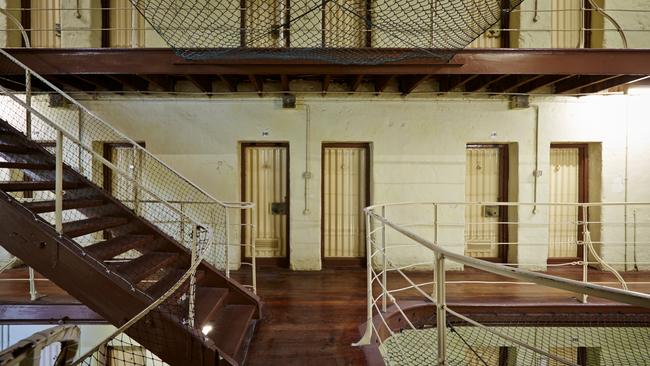
Western Australia
“Moondyne Joe”, convicted bread-stealer, became Western Australia’s most infamous bushranger and escape artist. Born Joseph Bolitho Johns, he went wrong in England by nicking bread, bacon and cheese, and was transported to Fremantle in 1853. He was soon released but 10 years later was nabbed for horse stealing around the wheatbelt towns of Toodyay (Newcastle) and York. Incarcerated in the pitiless Fremantle Prison, he bolted several times even from an “escape-proof” cell built specially for him.
On release in 1871, Joe went straight and survived into the 20th century, dying in 1900 at age 75 as possibly Australia’s longest-lived bushranger. He died of dementia in Fremantle Lunatic Asylum (today’s Arts Centre) and is buried in Freo cemetery. The huge prison that tried to hold him is now World Heritage-listed and home to a manacle-free youth hostel.

More to the story
Colonial Australia’s string of prisons held bushrangers and other offenders who were overseen by sometimes-comparable felons. Several of those historic jails, now reformed as museums, are open to visitors.
Darlinghurst Gaol, Sydney Now the National Art School, Darlo Gaol saw its share of bushrangers. Aboriginal Jimmy Governor, captured near Wingham, was hanged there in 1901. His life was reappraised in Tom Keneally’s 1972 novel and a movie, The Chant of Jimmie Blacksmith.

Kingston, Norfolk Island Today’s benign island was once a paradoxically dark place, an offshore penal hell. Kingston’s UNESCO-listed treasury of prison and other buildings is now the best-preserved Georgian settlement in the southern hemisphere.
Port Arthur, Tasmania The ruins here are among Tasmania’s most popular visitor attractions but this was a fatal shore between 1830 and 1877, where inmates progressed from solitary cells to the asylum and then the Isle of the Dead cemetery.
Beechworth, Victoria The handsome 1859 courthouse, town hall and jail complex (inset) still looks much as it did 150 years ago when several Kellys lingered in the cells and stood in dock.
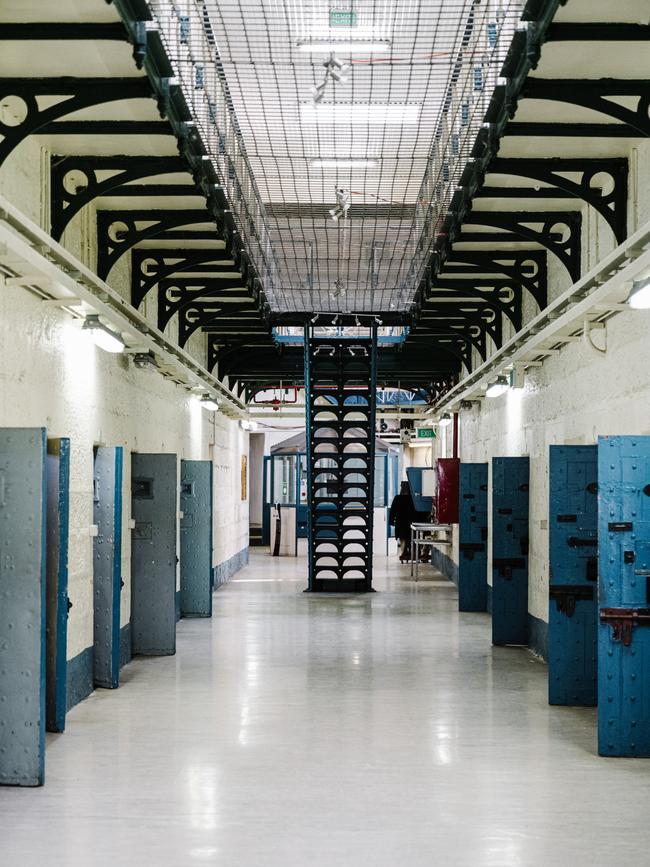
Old Melbourne Gaol Victoria’s oldest surviving prison operated from 1841 to 1929. Ned Kelly’s armour, the scaffold and his death mask survive in its museum. Beyond Ned, at least five others were hanged here for “robbery under arms”.
Cockatoo Island, Sydney The “worst of the worst” were dumped here. The first of them even had to build the jail and its claustrophobic solitary cells, and forge their own bars. The now World Heritage-listed prison housed up to 500 men.
Fremantle Prison, Perth Built by its own inmates from limestone hewed on site the jail opened in 1855, initially for transported convicts. After 1868 it became a civilian prison notorious for escapes and riots.




